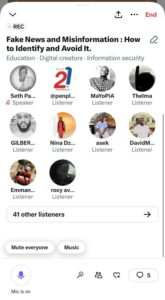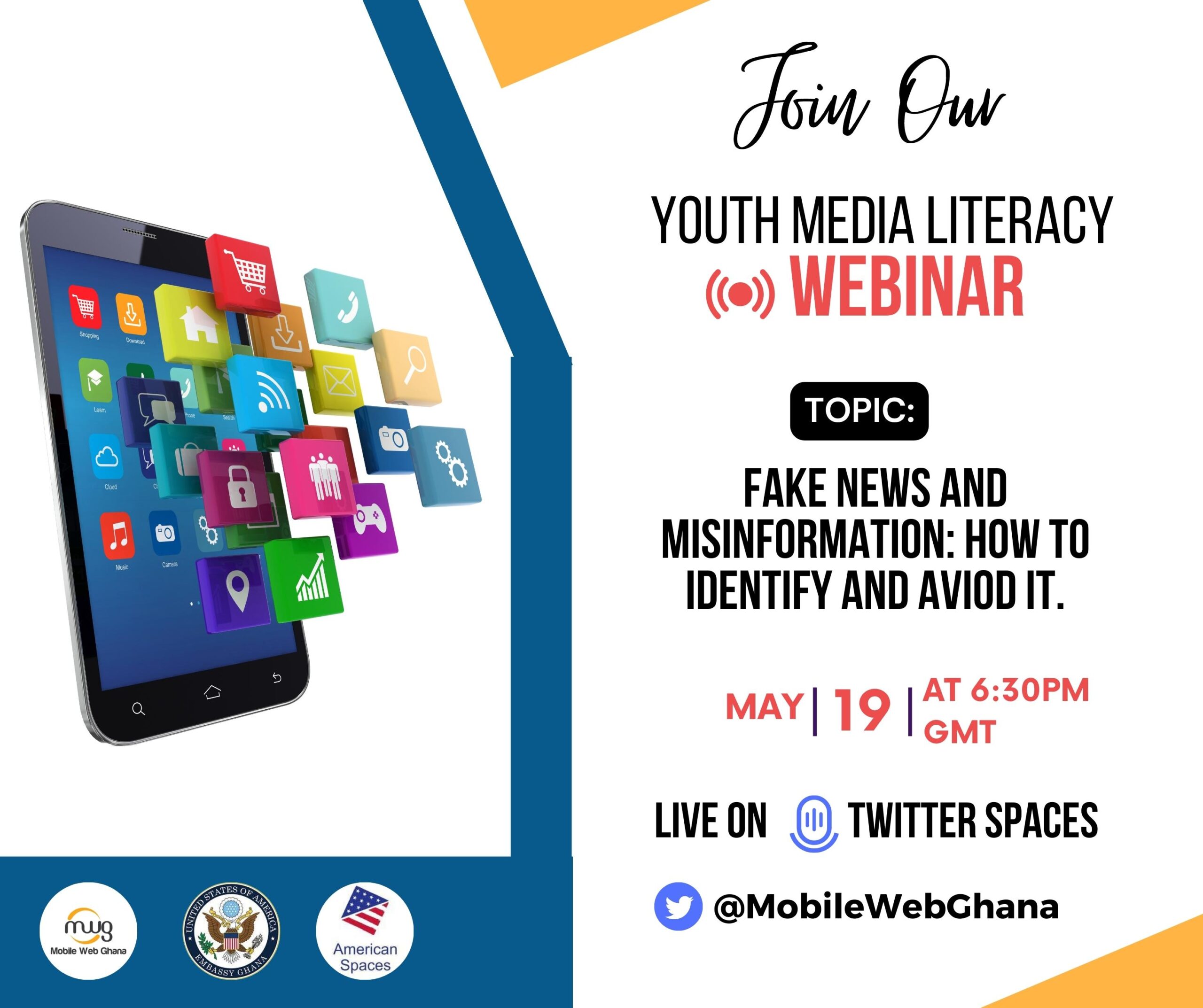On May 19, 2023, the second Youth Media Literacy Twitter Spaces session took place, focusing on the pressing issue of fake news and misinformation. The session aimed to equip participants with essential insights and strategies to identify and avoid false information while empowering them to become responsible consumers and sharers of news. Let’s dive into the key takeaways from the session and explore the tools and techniques discussed to combat the spread of fake news.
 1. Techniques Used in Spreading Fake News: During the session, expert speakers shed light on various tactics employed in spreading fake news:
1. Techniques Used in Spreading Fake News: During the session, expert speakers shed light on various tactics employed in spreading fake news:
a) Clickbait headlines: These captivating but often misleading headlines are designed to grab attention and drive traffic to unreliable sources.
b) Manipulated images: Photoshopped or altered images are used to distort facts or evoke specific emotional responses.
c) Misinformation campaigns: Coordinated efforts to spread false information, often through social media platforms, with the intention to deceive and manipulate public opinion.
2. Identifying and Verifying Credible Sources:
The panelists emphasized the significance of critical evaluation and shared practical tips to identify reliable and trustworthy information:

a) Cross-referencing: Verify information by checking multiple reputable sources. Consistency across credible sources increases the likelihood of accurate information.
b) Fact-checking organizations: Utilize fact-checking websites such as Snopes, FactCheck.org, or PolitiFact to verify claims and debunk misinformation.
c) Source credibility assessment: Evaluate the reputation, expertise, and potential bias of news outlets or authors. Transparent sourcing and adherence to journalistic standards are indicators of trustworthiness.
3. Tools for Identifying False Information and Verifying News:
Several tools and resources were discussed during the session to assist in identifying false information and verifying news:

a) Reverse image search: Utilize tools like Google Reverse Image Search or TinEye to determine the authenticity and original source of an image, helping to unveil potential manipulation or misrepresentation.
b) Browser extensions: Install browser extensions like NewsGuard or SurfSafe to receive credibility ratings for websites, providing alerts for potentially unreliable sources.
c) Social media verification: Verify the authenticity of accounts on platforms like Twitter through verification badges, particularly when dealing with information from public figures or organizations.
d) Media literacy resources: Educate yourself on media literacy through resources such as the News Literacy Project, MediaSmarts, or the Digital Civics Toolkit, which offer valuable guidance on identifying misinformation.
4. Combating the Spread of Fake News:
The session emphasized the shared responsibility of individuals, media organizations, and technology platforms in combating the spread of fake news. Here are some recommended steps:
a) Media literacy education: Promote media literacy programs to equip individuals, especially the youth, with critical thinking skills to evaluate and analyze information critically.

b) Responsible sharing practices: Encourage responsible sharing by verifying information before sharing or retweeting. Pause and think before amplifying unverified claims.
c) Reporting mechanisms: Actively report fake news and misinformation on social media platforms, enabling content moderation and the removal of misleading information.
d) Fact-checking initiatives: Support and promote fact-checking organizations that play a crucial role in debunking false claims and disseminating accurate information.
The second Youth Media Literacy Twitter Spaces session offered valuable insights into combating fake news and misinformation. By applying techniques such as cross-referencing information, utilizing fact-checking resources, and employing tools like reverse image search, individuals can enhance their media literacy skills and contribute to a more informed society. Through media literacy education, responsible sharing practices, reporting mechanisms, and support for fact-checking initiatives, we can collectively combat the spread of fake news and foster a trustworthy information ecosystem.

